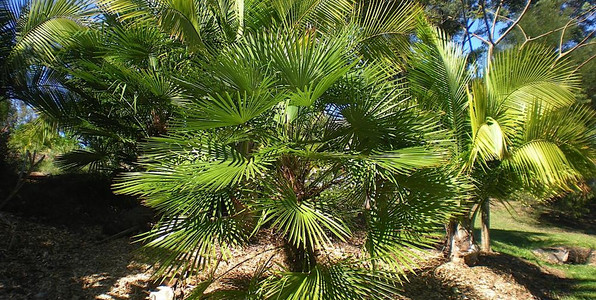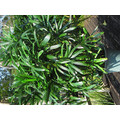Gallery
Click the thumbnails below to view image gallery:Most people think of palms as tropical plants, but the Chinese Windmill Palm, which is also known as Chusan Palm (trachycarpus fortunei) proves that palms can also grow in cold-hardy zones. Beginners are likely to have an easy time caring for the Chinese Windmill Palm since it is quite tolerant of many conditions.
This palm is not suited to tropical Australia where it is too warm and wet in the summer. In the subtropics around northern NSW it does most of its growing during winter. Its only problem is too much rainwater during summer, causing fungal diseases. This is the coldest tolerant palm in the World growing down to -15 degrees c.
They require moderate watering
This type of palm suffers from root and trunk rot if overwatered and will die without any warning.
Make sure you maintain a regular schedule when watering your palm. An irregular schedule would mess up its growth pattern and may cause it to suffer from a shrunken and malnourished-looking form when it should be tall and sturdy.
Keep in mind that a full-grown Chinese Windmill Palm can reach up to 7 metres in height and 3 metres wide. Anything significantly less than that means it is suffering from ill health.
Soil must be well drained and moist
Properly moist soil will also improve plant growth and help your palm enjoy maximum health. As for drainage, that has more to do with how you prepared your soil and the drainage system in your garden.
Fertilise your plant for "extra" insurance
Technically speaking, Chinese Windmill Palms are able to obtain everything they need from natural sources like good soil, water, and sunlight. It does not hurt, however, if you give them extra "vitamins" by fertilising your soil.
Commercially packaged fertilisers are more than sufficient so you need not worry about having to make your own. Just double-check that you are using fertiliser specifically formulated for palm growth.
If there is no palm-specific fertiliser available in your local gardening supply store, then one alternative is to add nitrogen fertiliser on the first 2 inches of the soil and together with organic compost.
Be vigilant against pests and diseases
Compared to other plants, the Chinese Windmill Palm is not as susceptible to pests and all other types of diseases. This does not mean it is completely immune to them.
In terms of pests, palm aphids and scales are their greatest problems so take action in advance and make use of natural pest-control methods to keep them away. This particular palm species is also known to be quite vulnerable to root rot, leaf spots, and yellowing diseases. Take precautionary measures for that. It is better suited to cold or temperate areas rather than the wet tropics.
Re-create its original setting
If you are planning to grow this particular type of palm outdoors or in a greenhouse, do your best to recreate the conditions in its land of origin. If you can do that, then you will have little to worry about when growing the Chinese Windmill Palm.
<< Previous Tips about Caring for Majestic Palms (Ravenea rivularis) | Back to Tips for Growing Magnificent Foxtail Palms (Wodyetia bifurcata) | Next >> Understanding the Nature of Triangle Palm for Beginners






